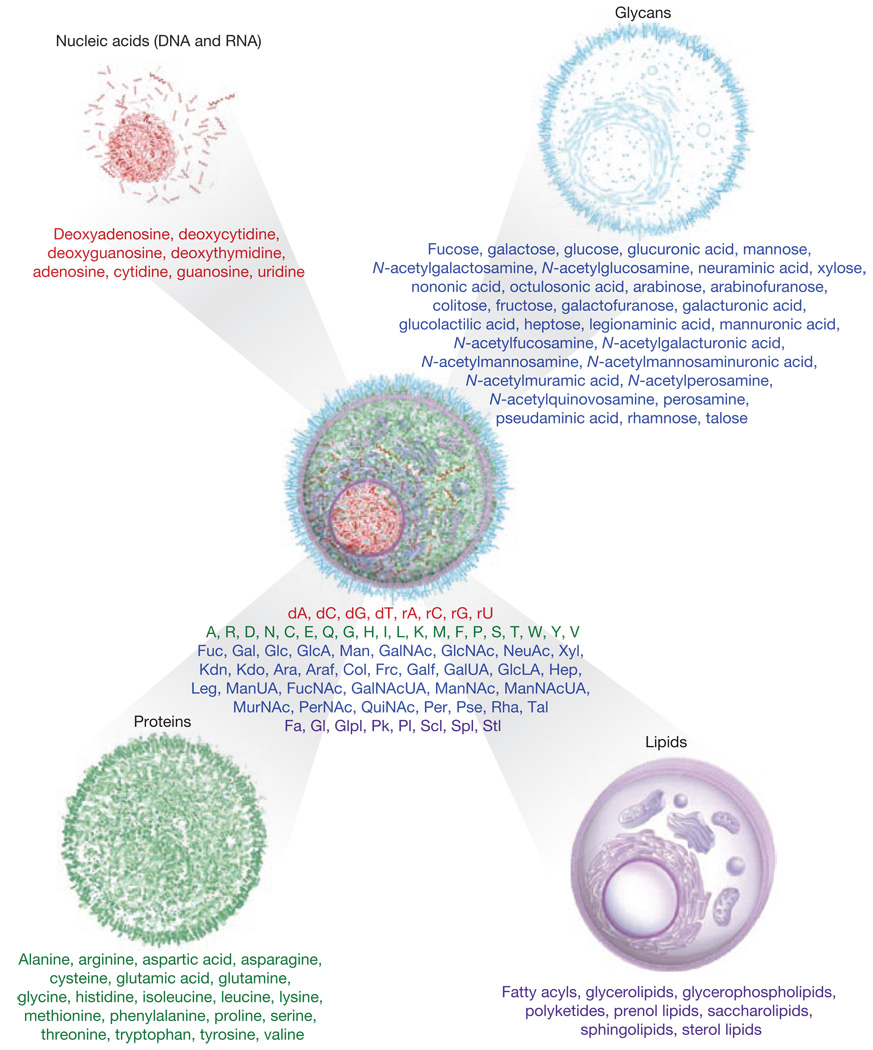Figure 1.
The molecular building blocks of life. There are 68 molecules that contribute to the synthesis and primary structures of the 4 fundamental macromolecular components of all cells: nucleic acids, proteins, glycans and lipids. DNA and RNA are produced from the 8 nucleosides. Although deoxyribose (d) and ribose (r) are saccharides, they are an integral part of the energetically charged nucleoside building blocks that are used to synthesize DNA and RNA. There are 20 natural amino acids used in the synthesis of proteins. Glycans derive initially from 32, and possibly more, saccharides used in the enzymatic process of glycosylation and are often attached to proteins and lipids, although some exist as independent macromolecules. Lipids are represented by 8 recently classified categories and contain a large repertoire of hydrophobic and amphipathic molecules. The number of molecular building blocks does not directly infer the relative structural complexity of the repertoire of each component. Not shown are the many different post-synthetic modifications of the molecules within these components.

